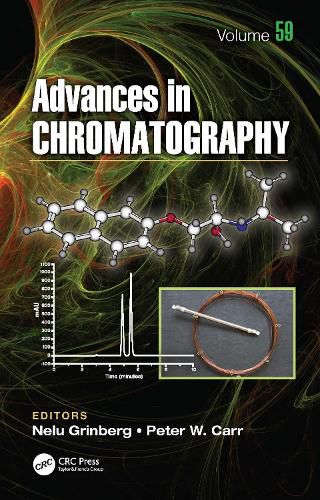Readings Newsletter
Become a Readings Member to make your shopping experience even easier.
Sign in or sign up for free!
You’re not far away from qualifying for FREE standard shipping within Australia
You’ve qualified for FREE standard shipping within Australia
The cart is loading…






For six decades, scientists and researchers have relied on the Advances in Chromatography series for the most up-to date information on a wide range of developments in chromatographic methods and applications. The clear presentation of topics and vivid illustrations for which this series has become known makes the material accessible and engaging to analytical, biochemical, organic, polymer, and pharmaceutical chemists at all levels of technical skill.
Describes the thermodynamics and kinetics underlying hydrophobic interaction chromatography of proteins.
Outlines use of a kinetic model in the predictive modeling of evaporation processes that eliminates the need to know the composition and identity of the chemical constituents in the sample.
Explores building and employing QSRR models in cyclodextrin modified high-performance liquid chromatography (HPLC).
Reviews chemometric methods commonly paired with comprehensive 2D separations and key instrumental and preprocessing considerations.
$9.00 standard shipping within Australia
FREE standard shipping within Australia for orders over $100.00
Express & International shipping calculated at checkout
For six decades, scientists and researchers have relied on the Advances in Chromatography series for the most up-to date information on a wide range of developments in chromatographic methods and applications. The clear presentation of topics and vivid illustrations for which this series has become known makes the material accessible and engaging to analytical, biochemical, organic, polymer, and pharmaceutical chemists at all levels of technical skill.
Describes the thermodynamics and kinetics underlying hydrophobic interaction chromatography of proteins.
Outlines use of a kinetic model in the predictive modeling of evaporation processes that eliminates the need to know the composition and identity of the chemical constituents in the sample.
Explores building and employing QSRR models in cyclodextrin modified high-performance liquid chromatography (HPLC).
Reviews chemometric methods commonly paired with comprehensive 2D separations and key instrumental and preprocessing considerations.